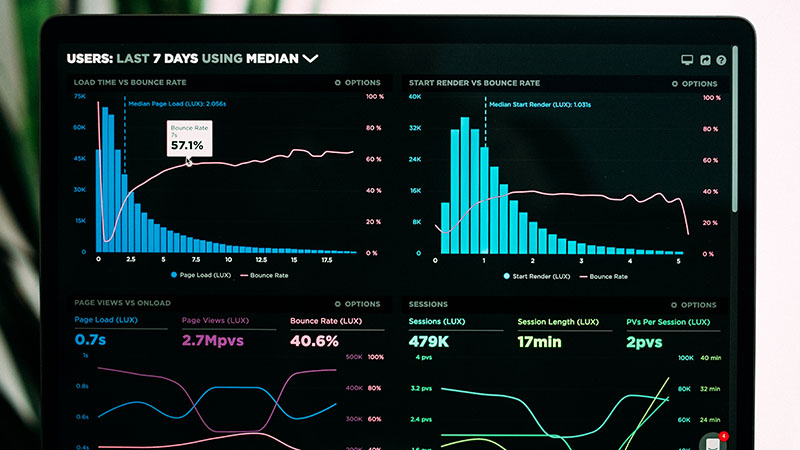Grow your business with the Discover newsletter
Logistics advice & insights straight to your inbox
Subscribe now
The B2B sector is transforming. In a nutshell, when it comes to conducting business, it’s out with the old, in with the new. Traditional face-to-face meetings between buyers and suppliers that have always been central to B2B sales were forced onto Zoom and Skype during the pandemic. But it’s not just Covid-19 that has driven the change.
Enter, the new generation of B2B decision makers. Millennials, also known as Generation Y, now account for around three-quarters of all B2B purchasing decisions1. They’re young, digitally savvy, and have grown up in a world where they can order anything and everything online, anytime. It’s only natural these behaviours would eventually influence their working practices, especially post pandemic.
Research by Gartner found that 44% of millennials prefer no sales rep interaction at all in a B2B purchase setting2, with buyers becoming increasingly comfortable placing even high-value orders via self-serve. B2B businesses that don’t invest in their e-commerce channels risk losing more and more sales opportunities as time goes on.
But it’s not just about pivoting to online…there is an opportunity for B2B businesses to create a new type of hybrid sales model, a mix of digital and in-person experiences that benefit both the seller and the customer. Read on for our top tips.

The first thing you should review is your e-commerce website – specifically, its search capabilities. McKinsey & Co.3 surveyed key B2B decision makers across the world and asked them “what ways of interacting with a supplier would be most beneficial to you when researching/considering suppliers going forward?” The most popular answer was onsite search4.
Consider the customer journey here. Onsite search comes early on – an initial check to see if your business can even supply what they’re looking for before they continue their research. Without a sales rep to guide them, buyers visiting B2B platforms and marketplaces will instead rely on a powerful search engine to help them find what they’re looking for. In fact, 43% of website visitors go immediately to search boxes5, so ensure yours is clearly visible on the home page (and indeed on every page), and has the option to filter results by product type, category and price.
Ensure your product pages are up to date, with detailed information and plenty of high-res photos. Depending on the product, you can even include instructional videos to guide customers further.
Ultimately, keep in mind the millennial buyer at the other end of the transaction. They want the online experience they’re used to when shopping as a B2C customer: a user-friendly website with fast loading speed, clear and intuitive navigation, product recommendations, easy checkout (with minimal form entry), multiple payment options and flexible delivery. Our Ultimate B2B E-commerce Guide will help you tick off the customer experience essentials.

The search bar is not just important to your customers; it will give you lots of valuable data to better understand their needs and improve your business. By reviewing the search logs, you can see what your customers’ challenges are and what products are in demand. You can use this data to improve your website’s functionality and improve user experience, to expand or filter the range of products you stock, and to inform future marketing messaging.

Don’t be mistaken in thinking the future of B2B sales is solely online. McKinsey’s most recent survey of B2B decision-makers6 (conducted in February 2021) found “omnichannel is now the standard, not the exception. Even as in-person engagement has remerged since August 2020, buyers have made clear they prefer a cross-channel mix, choosing in-person, remote, and digital self-serve interactions in equal measure.” As a result, “hybrid sales reps will soon become the most common sales reps.”
So, what exactly does this “cross-channel mix” look like?
Your sales reps should be treating your website as a lead generator. Using analytics, they can see a customer’s search history and if they abandoned their searches or baskets at the last moment. A friendly follow-up phone call from an experienced and knowledgeable sales rep to alleviate any hesitancies that the customer has, could help convert the sale. Of course, you’ll need to have their details to contact them in the first place, so consider adding a pop-up on your website that offers a discount if browsers enter their details.
Implementing live chat on your e-commerce website is another way sales reps can answer customers’ questions. It’s a win-win: your customers receive a more personal experience, whilst the sales reps can deploy the sales chatter and techniques they are so well versed in to secure a sale.

One of the leading sales techniques a sales rep has up their sleeve is price negotiation. This doesn’t have to end just because things move online. However the customer is online shopping, they’ll always be looking for the best prices. Introducing a price-match guarantee policy – and promoting it clearly on your e-commerce website – might just be the incentive the buyer needs to complete the purchase.
Similarly, price negotiation should be a central part of your strategy when contacting customers who abandoned their carts at the last moment on your website. A follow-up phone call offering a special price, or an email with a discount code could nudge them to buy.

Finally, remember to keep it personal. 69% of buyers want a business to tailor their sales pitch to meet their specific needs7, and you’ll only be able to do that if you really understand what they want.
Keep the lines of communication open, always, whether that’s inviting feedback through your website, or calling prospects direct. Ask them about their challenges, their goals, and what they need from you to get the deal across the finish line. This information should be shared across your sales, digital and marketing teams to build a better service.
1 - How to Meet Buyers’ Demand for (Better) B2B E-Commerce, Sana, 2019
2 - Future of Sales 2025: Deliver the Digital Options B2B Buyers Demand, Gartner, December 2020
3 - McKinsey & Co.
4 - How B2B decision makers are responding to the coronavirus crisis, McKinsey & Co., 2020
5 - Forrester research, Algolia, October 2019
6 - B2B Pulse: Insights from our latest global survey, McKinsey & Co., March 2021
7 - Harvard Business Review, July 2020